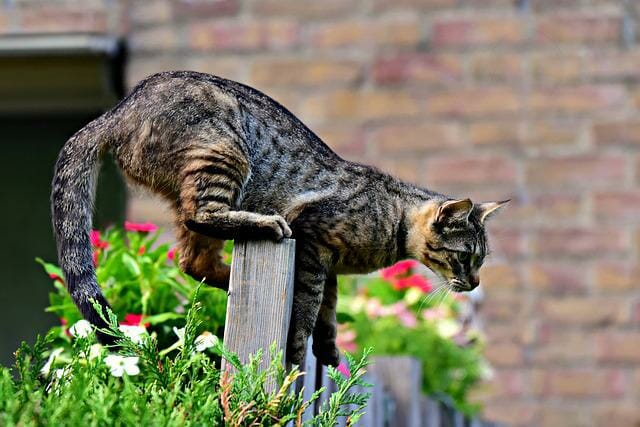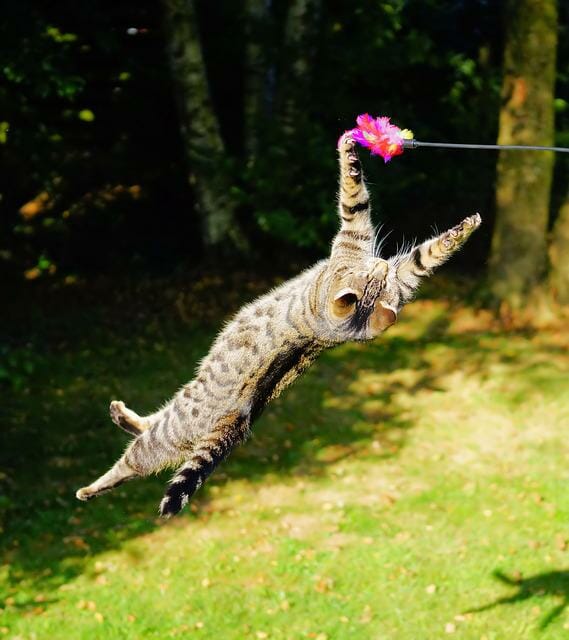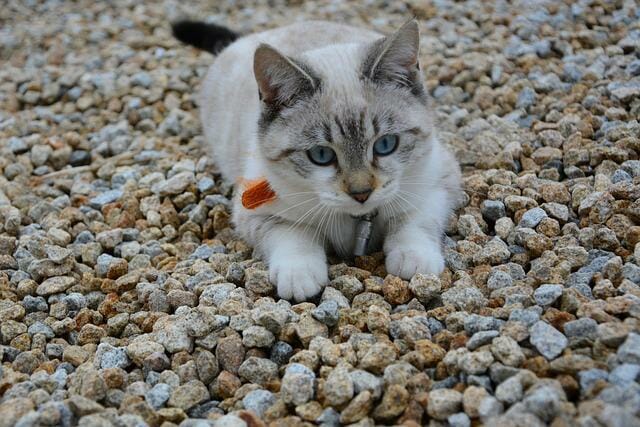How High Cats Can Fall: What You Need to Know About High-Rise Syndrome
While there is no specific height at which cats can no longer survive a fall, the consensus among experts is that cats can typically survive falls from up to six stories or around 60-70 feet (18-20 meters) without suffering serious injuries. However, it’s important to note that many factors can affect a cat’s ability to survive a fall, including its land surface, age, and the angle and speed of its descent.


Table of Contents
Feline High-Rise Syndrome Causes
Feline High-Rise Syndrome is a term used to describe an injury that occurs when cats fall from high places, confirmed by WebMD. It is a serious and potentially life-threatening condition that can cause various injuries, including fractures, internal organ damage, and head trauma.
Cats are often attracted to high places and may climb onto balconies, rooftops, or window sills, where they can be at risk of falling. To prevent Feline High-Rise Syndrome, taking precautions such as installing secure screens on windows and balconies, keeping cats indoors, or providing safe outdoor enclosures or catios is important.
If your cat falls from a high place, seeking immediate veterinary care is important. Even if your cat appears unharmed, it may have suffered internal injuries or other damage that is not immediately visible. However, with prompt medical attention, many cats can recover from falls and go on to lead healthy, happy lives.
Feline High-Rise Syndrome Risk Factor
Living in a High-Rise Building or Apartment Complex
Living in a high-rise building or apartment complex can pose unique challenges for cat owners. High-rise buildings may not offer outdoor space for cats to explore and play, which can lead to boredom and behavioral problems. Balconies or windows without barriers can pose a serious risk to cats, who may fall and sustain injuries.
High-rise buildings may be located in noisy areas, which can cause stress and anxiety in cats. In addition, cats living in high-rise buildings may have limited opportunities to interact with other animals, leading to socialization issues.
Being an Outdoor Cat
Allowing cats to roam outdoors unsupervised is a common practice in many parts of the world. However, several risks are associated with letting cats outside, including falling from high places and sustaining injuries. For example, cats who spend time outdoors are at increased risk of falling from high places, such as trees, roofs, or balconies.
Outdoor cats are at increased risk of exposure to diseases from other animals, such as feline leukemia virus, feline immunodeficiency virus, and rabies. Also, outdoor cats are at increased risk of being hit by cars or other vehicles. They may get into fights with other animals, which can lead to injuries and the transmission of diseases. They are also at increased risk of accidental poisoning from ingesting toxic substances, such as antifreeze or rat poison.
Age
Age can be a risk factor for cats in several ways. For example, as cats age, they may be more prone to certain health issues impacting their overall well-being and quality of life. For example, they may experience mobility issues such as arthritis or decreased flexibility, which can make it difficult for them to climb or jump.
Some cats may experience a decline in cognitive function as they age, leading to confusion, disorientation, and other behavioral changes. For example, cats are at increased risk of developing chronic diseases such as diabetes, kidney disease, and hyperthyroidism as they age.
Older cats may be at increased risk of dental problems such as tooth decay or gum disease, impacting their eating ability and leading to other health issues.
Feline High-Rise Syndrome Treatment


Pain Management
Pain management is an important part of treating many medical conditions in cats, including those that cause acute or chronic pain. It is also an essential component of post-operative care and for managing pain associated with cancer, arthritis, and other chronic conditions. There are several options for managing pain in cats, including:
- Medications: Pain medications such as opioids, non-steroidal anti-inflammatory drugs (NSAIDs), and local anesthetics can manage cat pain. However, it’s important to work closely with your veterinarian to ensure that the medication is safe and effective for your cat and that the dosage is appropriate.
- Nutraceuticals: Certain supplements, such as glucosamine and chondroitin, may help manage pain associated with arthritis and other joint conditions.
- Physical therapy: Massage, acupuncture, and other forms of physical therapy can help manage cat pain and may be particularly effective for chronic pain.
- Lifestyle changes: Changing your cat’s diet, exercise routine, and environment can help manage pain. For example, providing soft bedding and reducing physical activity may help alleviate pain associated with arthritis.
- Complementary therapies: Certain complementary therapies, such as herbal remedies, homeopathy, and aromatherapy, may also help manage cat pain, but it’s important to discuss these options with your veterinarian first.
Fluid Therapy
Fluid therapy is a medical treatment to help support dehydrated cats suffering from electrolyte imbalances or losing fluids due to illness or injury. Fluid therapy involves the administration of fluids either intravenously (through a vein) or subcutaneously (under the skin).
The type of fluid administered and the method of administration will depend on the underlying condition and the cat’s overall health status. For example, a cat with severe dehydration may require intravenous fluids, while a cat with mild dehydration may be able to receive fluids subcutaneously.
Fluid therapy can rehydrate cats who have lost fluids due to illness, injury, or surgery. It can help support blood pressure in cats in shock or with low blood pressure due to illness or injury. Fluids can help support the kidneys and other organs, especially in cats with conditions that affect organ function. It can also replace lost electrolytes such as sodium, potassium, and chloride.
Wound Care


Wound care is essential to treating cats who have suffered injuries or have undergone surgery. Proper wound care can help prevent infections, promote healing, and reduce pain and discomfort.
The first step in wound care is cleaning the affected area to remove debris or bacteria. This may involve using an antiseptic solution or rinsing the wound with sterile saline. It’s important to avoid using hydrogen peroxide, alcohol, or other harsh chemicals, as these can damage healthy tissue and delay healing.
Once the wound is clean, it may be necessary to trim any hair around it to prevent it from getting caught in the wound and causing irritation. The wound may then be covered with a sterile dressing or bandage to protect it from further damage and to promote healing.
If the wound is deep or requires sutures, the cat may require anesthesia or sedation to ensure that the wound is properly cleaned and closed. In some cases, drains may be placed to remove excess fluid and promote healing.
Surgery
Surgery is a medical procedure that is sometimes necessary to diagnose or treat various conditions in cats. Some common reasons why cats may require surgery include the following:
- Trauma: Cats who have suffered injuries from falls, accidents, or fights may require surgery to repair broken bones, lacerations, or internal injuries.
- Cancer: Surgery may be used to remove tumors or cancerous growths in cats.
- Digestive issues: Cats with conditions such as blockages or foreign objects in their digestive tract may require surgery to remove the obstruction.
- Urinary issues: Cats with bladder stones or urethral obstructions may require surgery to remove the blockage.
- Reproductive issues: Cats who are not spayed or neutered may require surgery to prevent unwanted litters or to treat reproductive-related conditions.
Before surgery, cats will typically undergo a thorough physical examination, bloodwork, and other diagnostic tests to ensure they are healthy enough for the procedure. In addition, the surgery may be performed under general anesthesia, which requires close monitoring by a trained veterinary staff.
After surgery, cats may require pain medication and close monitoring to ensure that they are recovering properly. Depending on the type of surgery, cats may need to limit their activity or wear a protective cone to prevent them from interfering with the healing process.
Observation and Monitoring
Observation and monitoring are important aspects of maintaining your cat’s health and detecting potential health issues early on. Regularly monitoring your cat’s behavior, appetite, and other vital signs can help you detect any changes that may indicate an underlying health problem.
Monitor your cat’s appetite and water intake. Changes in these habits can indicate various health issues, from dental problems to kidney disease. Monitor your cat’s urine and bowel movements. Color, consistency, or frequency changes can indicate a urinary or digestive problem.
Monitor your cat’s weight. Sudden weight loss or gain can indicate a variety of health problems. Monitor your cat’s behavior. Changes in behavior, such as lethargy, aggression, or hiding, can indicate various health problems. Also, monitor your cat’s vital signs, including their heart, respiratory, and temperature. Changes in these vital signs can indicate a variety of health issues.
